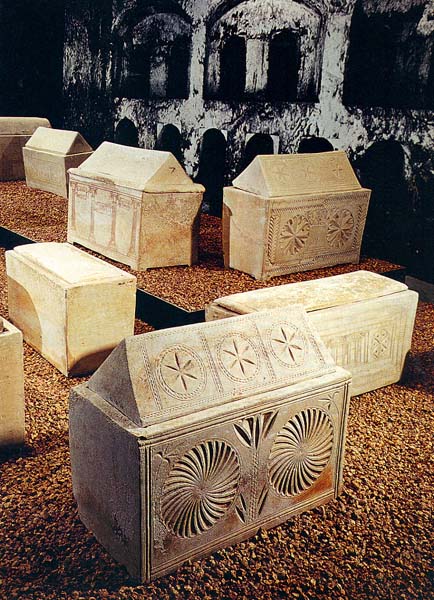Image Details

David Harris
Ornate and plain stone bone boxes (ossuaries), vestiges of the ancient practice of secondary burial, were used in Jerusalem only during the century preceding the destruction of the Second Temple in 70 C.E. According to later literary sources, relatives would gather the bones of the deceased from a resting place in a burial cave a year after death, when the flesh had decayed, and then redeposit them in an ossuary, which remained in a niche of the crypt.
That Jews practiced secondary burial is attested by the hundreds of ossuaries that have been found in excavated cave-tombs. What puzzles scholars, however, is why secondary burial appeared for such a short period and then abruptly ceased. Author Steven Fine posits that a prosperous economy in Jerusalem, coupled with Greek-inspired ideas that emphasized the importance of individuals in society, led Jewish families of the late Second Temple era to choose more personalized ossuary burial over traditional charnel interment.
